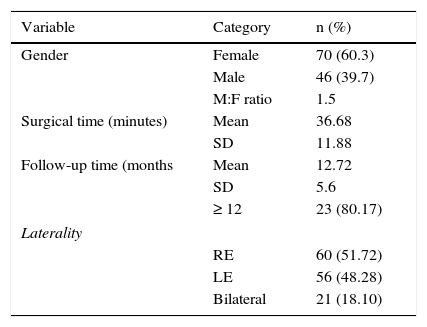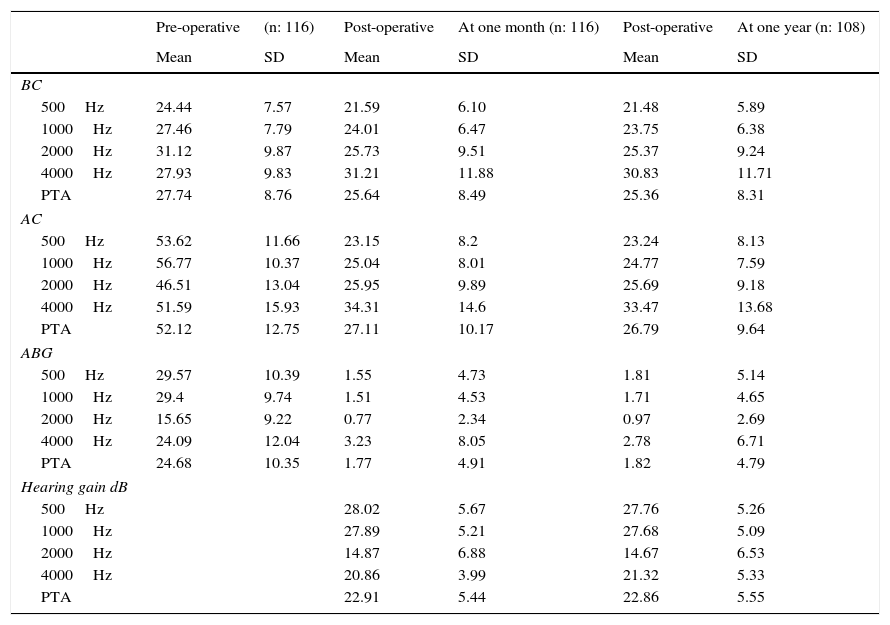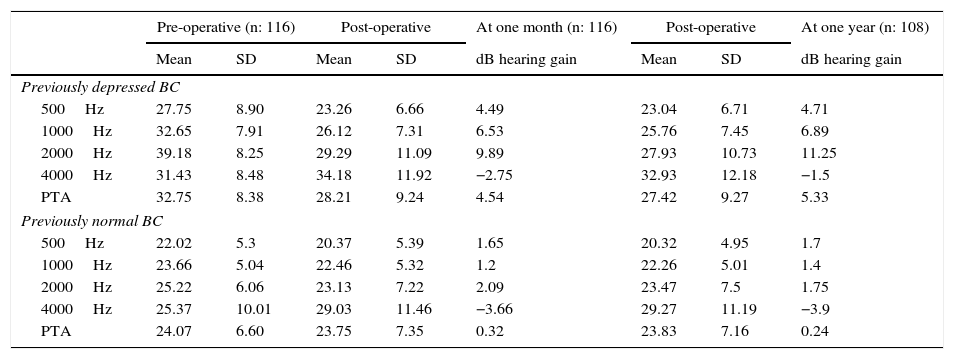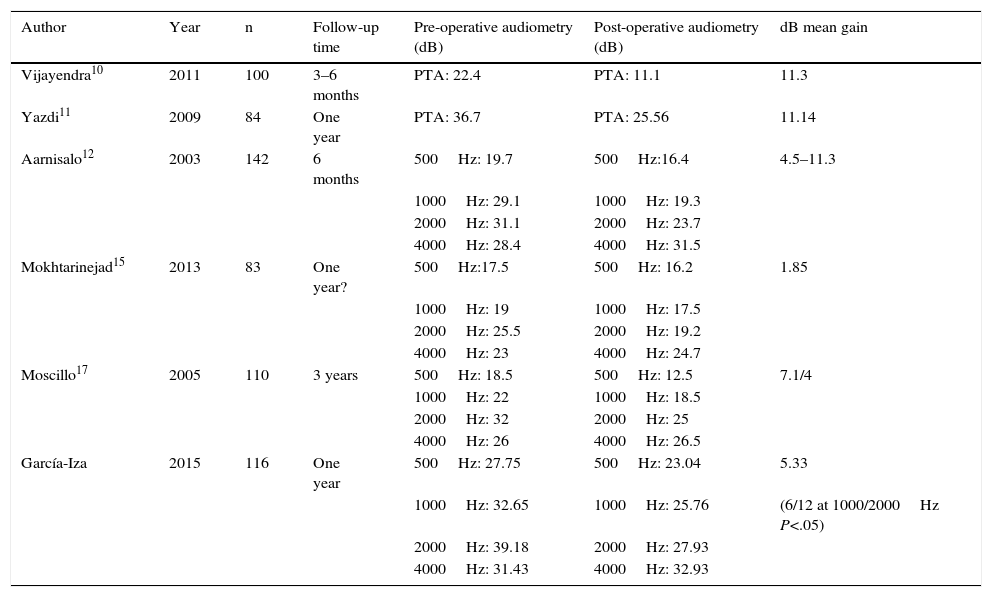Bone conduction threshold depression is not always a result of inner ear and cochlear nerve pathology. In fact, middle ear pathologies may be responsible for such threshold depression, as occurs in otosclerosis. The aims of this study were to evaluate the improvement of bone conduction threshold in patients with otosclerosis that underwent stapedectomy and to study the postoperative audiological results.
Materials and methodsThis was a retrospective study on 95 patients (116 ears) diagnosed with otosclerosis having conductive or mixed hearing loss that received surgery (stapedectomy and complete removal of the footplate) consecutively. Audiometry was performed on all patients pre- and postoperatively (one month and one year after surgery). Bone and air conduction thresholds were measured at 4 frequencies (500, 1000, 2000 and 4000Hz).
ResultsThe air-bone gap was closed, with a residual air-bone gap below 10dB in 92.2% of the patients and below 5dB in 79.3% of the cases. The air conduction threshold improved an average of 25dB. The patients that had an affected bone conduction threshold preoperatively improved bone conduction postoperatively at the frequencies of 1000 and 2000Hz (6 and 12dB, respectively). Consequently, the Carhart notch disappeared on the audiogram. These results were maintained at one year of follow up.
ConclusionsWe found a significant improvement in the bone conduction threshold at the frequencies of 1000 and 2000Hz and a disappearance of the Carhart notch in the audiogram after stapedectomy and total footplate removal in patients diagnosed with otosclerosis having mixed hearing loss.
La alteración del umbral auditivo de la vía ósea no solo corresponde a enfermedad localizada en el oído interno y nervio coclear, sino que puede ser secundaria a enfermedad presente en el oído medio, como ocurre en la otosclerosis.
El objetivo de este estudio es analizar el resultado audiológico posquirúrgico y evaluar el efecto de la estapedectomía en el umbral auditivo de la vía ósea en pacientes con otosclerosis.
Material y métodosEstudio retrospectivo de 95 pacientes (116 oídos) con hipoacusia de transmisión y mixta, diagnosticados de otosclerosis e intervenidos de forma consecutiva con la misma técnica de estapedectomía con platinectomía total. Se realizó audiometría tonal de las frecuencias 500, 1.000, 2.000 y 4.000Hz para la vía aérea y ósea en todos los casos de forma pre- y posquirúrgica (al mes y al año del procedimiento).
ResultadosSe obtuvo un cierre del umbral diferencial de audición, con un valour residual<10dB en el 92,2% de los pacientes y<5dB en el 79,3%. La ganancia media obtenida en la vía aérea fue de 25dB. Los pacientes con afectación preoperatoria de la vía ósea mostraron una mejoría significativa en las frecuencias 1.000 (6dB) y 2.000 (12dB), con desaparición del escotoma de Carhart. Estos resultados se mantuvieron sin cambios al año de seguimiento.
ConclusionesComprobamos una mejoría significativa de la vía ósea en las frecuencias 1.000 y 2.000Hz, con desaparición del escotoma de Carhart tras estapedectomía en pacientes diagnosticados de otosclerosis que presentan hipoacusia mixta.












